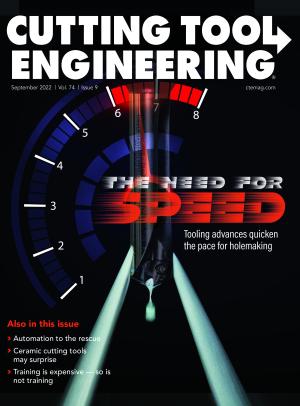Who has not heard of the “great resignation”? Probably not many. Initiated by the pandemic and fueled by worker discontent, the job market has been thrown into upheaval as millions of people ditch their jobs. Some never return to the job market while others change careers or find better jobs in their field. Labor experts admit we are in an unprecedented time of change.
The lack of skilled craftspeople has been a problem for manufacturing companies for a decade or so as they struggle to overcome negative stereotypes and perceptions while fighting to place talented people in critical roles. Many days, it feels like we are losing the fight. Now the great resignation is further reducing the number of skilled workers and devastating the knowledge base that supports the shop floor workforce.
Quite often, when a talented person is brought on to a team, we anxiously anticipate the day he or she resigns for a better job, for increased pay or just because the employee is ready for something new. All companies are going to continue struggling with this conundrum, but manufacturing companies will suffer more because the work is complex and manufacturing jobs are proving to be undesirable with the changing workforce.
So what can we do to overcome these difficult times?
Obvious answers are things like increased pay, improved benefits, better working conditions, automation, outsourcing and flexible schedules. We all know that these things are critical to attracting and retaining a skilled workforce, but pay and benefits are only part of a more complex fabric needed to provide a fulfilling career experience that gets people to come and stay.

An online search will yield numerous articles published by respectable sources describing a workforce that is leaving for pay, benefits and, not surprisingly, career satisfaction. Most of these experts agree that pay is only part of the unhappiness-with-my-job equation — career satisfaction is driving the great resignation.
It is simple: People at all levels of an organization need to believe that their time and effort add value. Talented people also want to feel growth through increased responsibility, and they seek to experience diversity in daily job responsibilities.
Now more than ever, companies need to invest time and money in developing robust training and development programs for employees at all levels of organizations.
Robust training programs start with in-depth, comprehensive onboarding of new employees. This is the first time that a new hire will experience the organization firsthand and see the team in its true colors. Onboarding sets the tone and should be more than the compulsory safety and human resources training. Good onboarding includes information about how to access data needed to perform the job and details on using critical software like ERP and MRP systems. Most importantly, onboarding contains a definition and explanation of the role and responsibilities of the new hire.
Whether working at an assembly station, a welding bench or a computer, job-specific training is the foundation for success. One of the best training programs I have seen was in the
automotive industry. My previous employer required every new employee, regardless of rank, to work one week on every line. Once completed, the employee would then report to his or her regular position and resume job-specific training.
This regimen allowed every office worker to experience life on the factory floor to understand the challenges faced by those teams. Each of the craftspeople got to experience the jobs of their peers so they would understand how their work affected everyone else. Everyone got to know the workflow, factory layout and people they worked with. It was highly effective.
Front-line jobs are becoming more and more complex as employees are required to complete complicated manufacturing processes and increasingly are also required to interact with technology and operational metrics that have not traditionally been part of a craftsperson’s role.
Technology itself may not present significant challenges for a modern workforce, but on-time delivery, first-pass yield, total recordable injury rate and other key metrics must be explained to those new to the industry. When new supervisors or team leaders do not understand these things, they are placed in a precarious place that can be frustrating.
Obviously, training does not end with the onboarding process. This should be a careerlong activity. As people mature in careers, they transition from activities that impart knowledge into activities that hone existing skills.
I have had countless conversations with good employees who were unhappy because they felt stagnant. Sometimes people find themselves stuck in a role because they are talented and finding another person for the job would be difficult. Many people — not all — need variation in their careers. A robust training program naturally creates multiskilled people who can add value in a variety of places and reduces the chances of a talented person becoming stuck in a role. This also lowers the odds of an organization becoming hamstrung when a talented person moves on.
In other cases, employees are fully satisfied with their job or craft, but they desire to continue pushing themselves to improve. They can be compared to a world-class marathon runner who is running the same race but constantly trying to go faster. Craftspeople, such as welders and machinists, are often like an athlete looking for an edge that makes them a little better than the rest. A good company will feed this addiction with training and education because everyone wins when an employee’s hunger for knowledge is satisfied.
Training is expensive, no question. Because the cost of training stands out on a spreadsheet, it is often one of the first things that a company cuts when the budget gets a little tight. While the cost of educating and training can be significant, the cost of not training can be much higher, particularly because it can be difficult to spot when it is hidden in poor quality, missed deliveries, injuries and the cost of recruiting. When companies stop training, usually to reduce costs, it is common to see the cost of quality increase, along with injury rates.
Educating and training the workforce is a key element in maintaining job satisfaction and retaining talent. The labor market will continue to be tight, and retaining talented people will continue to be difficult. The latter is going to require companies to provide training, continuing education and opportunities to hone skills. Maintaining a strong safety and quality culture also requires a rigorous training program. It’s simple: Providing education, training and enrichment to the workforce builds a foundation for success.
Related Glossary Terms
- feed
feed
Rate of change of position of the tool as a whole, relative to the workpiece while cutting.


